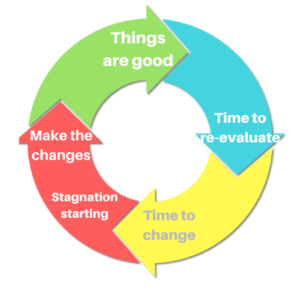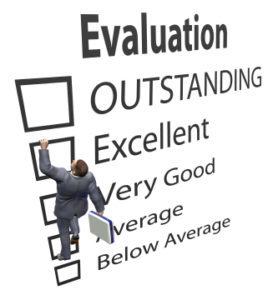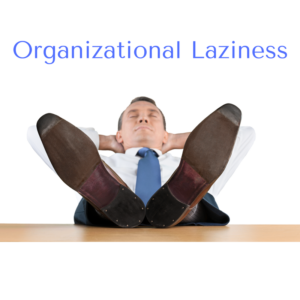Mary E. Marshall's Blog, page 25
June 28, 2017
How Is Your Organization Designed?
 When I work with an organization, I look at a lot of things. Over the years, however, I’ve come to believe the fundamental “design” of the organization is the key to its success or failure. This is actually a little different than Organizational Development or “OD” as it’s known. OD is a deliberately planned, organization-wide effort to increase an organization’s effectiveness or efficiency.
When I work with an organization, I look at a lot of things. Over the years, however, I’ve come to believe the fundamental “design” of the organization is the key to its success or failure. This is actually a little different than Organizational Development or “OD” as it’s known. OD is a deliberately planned, organization-wide effort to increase an organization’s effectiveness or efficiency.
Design is how the organization is set up. Yes, it involves the organizational chart or “org chart,” but it’s how it’s put together that allows a company to thrive or wither. Think of it like StrengthsFinders 2.0, the work by the Gallup organization that posits that everyone has strengths that can be grown into talents. Strengths are the natural areas of ability that people thrive in if practiced or nurtured.
The strengths required for each position in an organization need to be matched to the right individual and the structure around that person needs to be matched to his or her development needs. It goes something like this:
At the foundation, start with the values of the organization.
Then start looking at what the organization requires for its product or service to be sold and delivered profitably.
Next, you create positions with strengths identified that if developed into talents, would make the individual and the company successful.
This is done for each department. It is tested continuously until you have the right “mix” for the batter.
Next create the management structure that supports, nurtures and trains these “strengths” to tease out the talent. You also need to do the same for the management.
In its simplest form, it’s about having the right people on the bus, in the right seats, (as author of “Good to Great” Jim Collins would say).
It’s rare that you see an organization with the organizational design right and firing on all cylinders and it takes a while to get there, through lots of trial and error. But when you do, it all comes together like beautiful music being played by a world-class symphony orchestra. I’ve worked with a couple of companies in this position and it’s really thrilling to see the collaboration, lack of ego and the enormous amount of work being accomplished. What one client company had not been able to do in 20+ years, they have achieved in the last three. It’s like a new company. They have the battle scars to prove it, but the future is theirs for the taking – and they are having so much fun!
It’s what entrepreneurial companies are all about – trying new things, teaching, learning, collaborating, competing and at the end of the day, winning. All big companies were small once, and if you get the Organizational Design right, you’ll create a big company and launch people in the process. The design and people are the heart of the matter, the product always comes second. If you get the design right and the right people in the right positions your business will thrive!
The post How Is Your Organization Designed? appeared first on Mary Marshall // CEO Coach.
June 14, 2017
The Factory of the Future
 Recently, I was waiting in the lobby of Amazon headquarters at the Day One building for a contact of mine. As I watched the movement of hundreds of workers in and out of the secured entryways, I was fascinated by how much our workforce has changed. They were almost all young or at least under 35, dressed in every sort of clothing you could imagine, all ethnicities, shapes, and sizes, and almost a quarter of them had dogs with them. It suddenly dawned on me that this is truly the factory of the future.
Recently, I was waiting in the lobby of Amazon headquarters at the Day One building for a contact of mine. As I watched the movement of hundreds of workers in and out of the secured entryways, I was fascinated by how much our workforce has changed. They were almost all young or at least under 35, dressed in every sort of clothing you could imagine, all ethnicities, shapes, and sizes, and almost a quarter of them had dogs with them. It suddenly dawned on me that this is truly the factory of the future.
So, what do these workers of the future want and need? How as employers do we compete with the global players like Amazon to attract great talent? From my own observations, I would say the first thing they want is flexibility. I was told that the volume of “people traffic” going in and out of the building is the same at any time of day, so it wasn’t a shift change that I was watching. It seemed clear that flexibility to work the shift or times they want, do the work they want, bring pets, and the opportunity to live and work in the same community so they had time to actually “live” in the community beyond work were core priorities for this workforce. I suspect many, many others share these same priorities. Amazon has intentionally created community near their headquarters, creating an urban environment that is attractive to this demographic.
Another thing that seemed to be a priority was diversity. It was really striking to watch and see the mix of genders, ethnicities, age (except anyone over 50!), and individual character on display. There didn’t seem to be one “uniform” or one look, it was whatever you felt was your way to be.
Now, I was just watching this so my conclusions might not be correct, but it was a striking comparison to the factories of 40 or 50 years ago. For smaller employers, it will obviously be more difficult to provide the flexibility that some are looking for but remember, not everyone wants to work from home. A good slice of the workforce today actually likes coming into an office, for a variety of reasons, they just want flexibility on schedules and days. You can probably work this into your businesses depending upon the types of jobs you have.
The last thing is not something I observed, it’s something I know – this workforce wants training. Any way you can help them grow their skill set will be a bonus to most of them. The caveat is that you may not be able to take advantage of it fully because you won’t have them for more than 3-5 years. However, just by making training and development a priority, you will keep them longer and create an attractive business culture that includes learning where most can do their best work.
Is your company ready for the workers of tomorrow?
The post The Factory of the Future appeared first on Mary Marshall // CEO Coach.
June 7, 2017
Change – Whether We Like It or Not
 One of the few constants in business is change. Yet, we don’t like it and often ignore the fact that things are always changing. As a business leader, this means you will always be at a disadvantage unless you figure out a way to embrace change as a way of doing business.
One of the few constants in business is change. Yet, we don’t like it and often ignore the fact that things are always changing. As a business leader, this means you will always be at a disadvantage unless you figure out a way to embrace change as a way of doing business.
How often have you or your employees said, “we just got things figured out and now we have to change!” Precisely because you figured it out is the reason you will have to change. Competition never sleeps and will figure out what you know much faster than it took you to come up with the strategy in the first place. Great leaders are able to adapt to change, lead change, and most importantly predict the trends that lead to change.
Another critical piece for leaders is not only to embrace change but to ensure their approach to change is strategic and continues to forward the overall vision and mission of the business. Change for change sake, or change simply to follow trends can lead to a scattered approach to business that confuses employees and doesn’t create improvement, but instead, just a lot of work that doesn’t necessarily lead anywhere.
The easiest route is to stay the same – to coast because it’s known, it’s familiar and “we’ve got this.” The harder route is to anticipate which way things are going to be tomorrow, rather than where they are today. However, if you embrace change and treat it as normal, you will make it normal for your team. First, they need to know it’s okay – that it’s not a crisis and that there is a strategy for dealing with it. Second, that it’s part of business, like a puzzle waiting to be solved. Lastly, that anything that stays the same will be stagnant so it’s up to us to figure out how to make it better.
The young workers of today embrace change. They have already decided that they will have multiple careers in their lifetime, that they will do many different things and that they will be at a company for 3-5 years. As long as they are learning and growing they will stay and then they will move on to their next career or job. As employers, it’s up to us to take advantage of this mindset to see how we can leverage their talent while we have them, challenge them to learn, and enlist them to help us with change.
Business of today moves at the speed of light. Information flows so fast it’s almost impossible to keep up with it. The facts of yesterday are rendered inert by the innovations of today so it’s up to us to stop the resistance and embrace change as a good thing. Every day you will have more information with which to make better decisions. The challenge becomes making the decision while waiting for the next piece of information. To embrace change is to make the decision and know you will likely need to “change” something tomorrow and it’s okay. If you want to have a competitive advantage in business, your ability to embrace change could be a big one.
The post Change – Whether We Like It or Not appeared first on Mary Marshall // CEO Coach.
May 24, 2017
Strategic Mid-Year Review

As most of you who manage teams or companies know, a best practice is to give your employees mid-year reviews. Letting them know if they are on track, off track and listening to ideas and thoughts they have about their careers, progress, and goals.
It would follow then, that for those of you who have strategic plans for their companies, or at the minimum annual goals, it’s time for that mid-year review. Don’t worry, if you pull it out of the drawer or find the folder or tool you used to store it and it has dust, cobwebs or is faded due to lack of use. You are not alone. Letting one’s plan get lower and lower on the priority list as all of the “urgent” matters of the day come up is common, unfortunately, it can also be fatal to achieving long-term strategic goals.
You may, in fact, get a surprise in that you have achieved more than you thought, at least on some items. However, if you didn’t create a tracking mechanism for all the objectives or goals such as a dashboard, you might be tempted to bury it and start over.
Don’t do it. Be brave, take it out, metaphorically, (or for real), dust it off and honestly review your progress to date. Now is the time to make corrections, leverage what is working well, and change what is not. New factors may have come into play since you decided on the direction, things you want to leverage or mitigate so a review and refresh is completely in order. Get your management team together and do a debrief on the whole thing. Is it possible to achieve by year end? If not, revise the goals so they aren’t self-defeating. Add any new goals that have overtaken the original plan, and get the team back on track. It may be the first time since your annual strategic planning session that you’ve been strategic. The air is good up at this level – possibilities are endless! Show your team how good companies keep on track by initiating the conversation.
One caution is to NOT redo all the decisions that were made previously. Good, bad or indifferent, they are what you decided based on the set of facts you had at the time. No shame in changing direction if things did not turn out as anticipated, but time for a reset. And it’s not appropriate to cast blame on individuals who made those decisions. That’s a waste of time. It happened or it didn’t, now you have a new set of facts to move forward from. No need to do a complete SWOT again, just decide if you’re on track or off track and what changes need to be made.
Don’t forget to put in place a dashboard of sorts so the dust doesn’t accumulate a second time. Need help creating one? Here’s a free download of Chapter 8 from my book, “Putting Together the Entrepreneurial Puzzle” and it can help you put together an effective dashboard.
Lastly, celebrate the wins! It’s not good for morale or momentum if you only focus on “misses” and what’s not working. Acknowledging successes is critical for your leadership perspective and for your team’s effectiveness.
The post Strategic Mid-Year Review appeared first on Mary Marshall // CEO Coach.
May 17, 2017
How Not to Fire Someone
 Unless you haven’t seen the news this week, we were all witness to the firing of James Comey, the FBI Director. Although governmental appointees and private or public sector employees are different in some respects, firing them should always be done thoughtfully and carefully for the sake of both sides. Having your bodyguard take a letter to the person’s office while they are out of town performing a function of their job is perhaps one of the more spectacularly wrong ways to do it.
Unless you haven’t seen the news this week, we were all witness to the firing of James Comey, the FBI Director. Although governmental appointees and private or public sector employees are different in some respects, firing them should always be done thoughtfully and carefully for the sake of both sides. Having your bodyguard take a letter to the person’s office while they are out of town performing a function of their job is perhaps one of the more spectacularly wrong ways to do it.
I once had a scheduled call with my boss to be told about my raise and instead was told that my job was “being eliminated” while driving down the freeway between appointments and to call HR if I had any questions. The call lasted 3 minutes. Neither of these firings created a good outcome for the person doing the firing, let alone the person being fired.
Letting someone go is usually one of the most difficult things for managers and employers to do. Not because it doesn’t need to happen but because as human beings, we don’t like conflict or confrontation. So, as they say for most things, preparation is the key to making sure that when and if you must let someone go, you do it as professionally as possible.
The first thing to remember is that the person you are letting go is a human being, presumably with feelings. Up until the point of firing, you should have been letting them know what they could do to improve the situation and helping them to do so. This should be in accordance with whatever your HR handbook says about performance improvement. It’s usually a three-step process; a verbal warning, a written warning with a plan for improvement, (resources, time, etc.) and then termination. But some people just like to jump to termination because “they can.” This is usually a very risky strategy that can lead to lawsuits, hard feelings, and embarrassment on both sides. It’s entirely avoidable.
Of course, the key to not getting to the point of firing is to hire right in the first place, a topic I’ve covered in other blog posts. But, assuming you did everything right and now you have to make the change, here are a few steps to consider:
Do it at the start of the week so the person doesn’t have the weekend to fret without being able to take action on it.
Make it direct, reference the previous written warning, or stated reason for the firing, answer any questions they have but do not open the conversation up for negotiation. The decision is made.
Let them know about severance or next steps they need to take.
Do let them say goodbye to their co-workers if appropriate, this is just respectful.
Provide whatever help/references you can given the circumstances.
Never bad mouth the person you just fired, especially to other employees in your organization. You don’t have to provide a reference but calling them names or spreading negative comments or gossip will not go well for you.
Remember that this person will have a story about you and your company, you want this last interaction to be as good as possible. Release people with dignity for both of your sakes. Treat them as you would want to be treated in similar circumstances. It says as much about you as it does about them.
The post How Not to Fire Someone appeared first on Mary Marshall // CEO Coach.
May 10, 2017
The Value of a Job Description
 How many times have you hired someone without having a job description? How many times have you interviewed someone without paying attention to the job description? I can’t tell you how many times I’ve seen this happen over the years and given the difficulty of hiring successfully this seems like a counter-intuitive move, to say the least.
How many times have you hired someone without having a job description? How many times have you interviewed someone without paying attention to the job description? I can’t tell you how many times I’ve seen this happen over the years and given the difficulty of hiring successfully this seems like a counter-intuitive move, to say the least.
Just think if we would have had a job description for President of the United States – would either candidate have qualified? When voting for your local congressional representatives, are you aware of their job descriptions? I would posit that one of the reasons we are so unhappy with their performance in general is that we completely ignore what they are actually supposed to be doing. Experience in diplomacy, legislating, public service, government affairs or public sector governance would all be things we would want to evaluate when “electing” an official in charge of these things. It’s one thing to say they represent us but “how” they actually do this is another thing entirely. I think we are all seeing the fallacy of putting a supposedly successful business person in charge of the government. The two are not the same nor does success in one mean success in the other, it’s apples and oranges. Would you hire a contractor to be a surgeon or vice versa? Not likely.
Too often we hire someone because “we like them” or worse “get a good vibe” about them. Neither of these are predictors of success. The job description is the only way to even semi-accurately predict whether someone has the capability to do the job. You can test for skills and interview for behavior but unless you’re looking specifically for someone who can or has done the things in the job description – that you yourself have defined as success – how can you accurately judge that person? It’s not fair to them or to you to later say they are not doing well if you never checked out their qualifications against the job description in the first place.
I recommend a simple one-page job description. A brief paragraph of the responsibilities and what success in the position looks like, then a list of required characteristics, skills, education and experience and then a list of desired characteristics, skills, education and experience. Whatever you do, don’t make exceptions because “you like someone.” This will get you into hot water every time. After you have a job description that makes sense keep the process simple and don’t interview candidates unless they meet the requirements. The interview should consist of a couple of behavioral values-based questions to see if they are a fit for the culture then similar questions regarding their experience. You don’t care if they think they can do it, you want evidence that they have done something similar in the past and how they think about it. Research shows the cost of a bad hire is 3 times their annual salary. Ignoring the job description can be a very costly mistake.
When interviewing, go back to business basics and be like Joe Friday on Dragnet, “just the facts ma’am.” If a candidate doesn’t meet the requirements of the job description and doesn’t “wow you” with some of the additionally desired requirements, it’s time to move on.
The post The Value of a Job Description appeared first on Mary Marshall // CEO Coach.
May 3, 2017
The Fallacy of Unpredictability
 Occasionally I have worked with leaders who believe that unpredictability on their part keeps their teams “on their toes.” The current President also subscribes to this philosophy although as to whether this is a strategy or just a result of impulse remains to be seen.
Occasionally I have worked with leaders who believe that unpredictability on their part keeps their teams “on their toes.” The current President also subscribes to this philosophy although as to whether this is a strategy or just a result of impulse remains to be seen.
In either case, however, the result when leading a team (or a country) is usually not good. It is frequently used as a negotiating tactic and occasionally it’s successful. However, as a leadership strategy, it rarely produces positive results.
Employees need four things in a workplace according to Gallup; trust, compassion, stability and hope. Unpredictability as a tactic runs counter to all of these. When employees are fearful, lacking in hope, don’t trust the stability, or are not treated with compassion they do a number of things. They leave, they create drama, they resist, or they just quit while still on the job. What they aren’t is productive. So if it’s long-term results you’re looking for with your team, you might want to examine how you can be more predictable.
This does not mean telegraphing your every move, making sure everyone knows what you are doing, when and where you are doing it. It means that THEY are treated predictably, they know what to expect and they know how to succeed. If something changes with the direction of the company, the vision or mission or their work group priorities, they expect it to be communicated with as early as possible. And most importantly, in a way that takes into consideration how their work might need to change as a result. What’s in it for them and how can they now succeed based on the changed circumstances is critical information that must be communicated, without this, you break trust and people are less productive.
Think about the leaders you have followed and respected – I’m pretty sure the last thing you would say about them was that they were unpredictable. As human beings, we don’t much like change and lack of predictability means constant change. Those leaders who you admired and who would follow anywhere were most likely predictable. Not in everything they did but in how they led. You knew what to expect, you knew how to succeed, and most importantly you knew how you would be communicated with, especially when change was or had occurred.
Good leaders are able to provide some stability in chaotic situations. They see “around the corner” and help us predict what will happen. They give us an opportunity to learn and grow and change when needed. More importantly, they provide us with trust, compassion, stability and hope. Think about your leadership style and see if your employees would say that you create stability through predictability, if not, you may consider a different approach. You’ll be glad you did.
The post The Fallacy of Unpredictability appeared first on Mary Marshall // CEO Coach.
April 26, 2017
Retreat to Go Forward
 Today, reflection time is almost viewed as wasted time. Done well, it’s the least wasted time you will spend all week. As a great piece in The New York Times Op-Ed section recently pointed out, some pretty successful people use it very well.
Today, reflection time is almost viewed as wasted time. Done well, it’s the least wasted time you will spend all week. As a great piece in The New York Times Op-Ed section recently pointed out, some pretty successful people use it very well.
George Schultz is a highly accomplished individual and his ritual of “one hour per week” of reflection time that could only be interrupted by his wife or the president is the kind of time we ALL need. He set aside this hour for strategic thought, not tasks. No interruptions, no goals, no specific outcomes, just thought. What could we all accomplish if we dedicated this kind of time to thinking strategically? I suspect a lot. Most importantly, we would give ourselves the space for ideas, ways of doing things that we just don’t have when we busy “accomplishing” everything on our plates.
When I used to facilitate CEO groups with Vistage, I noticed that those CEOs who really “turned off” – no phones, no interruptions – were the ones who came away with the most “strategic” ideas for their businesses. Not just a task list, a new way to look or think of a problem. Those who were constantly tethered to their devices, were never really in the game, still being busy accomplishing “tasks” that were required yesterday. As David Leonhart points out, not all busy is good but we feel so much more productive when we’re busy. Sometimes we need to really step back to move forward.
I agree with Schulz that monthly is not enough, one hour per week keeps your brain on strategy vs. whatever you were focused on last month that you didn’t accomplish. Even if you come up with nothing, you will have given your brain one solid hour of thinking time. What would happen if your team was given this same freedom – with rules to turn off technology? You just might get more strategic thinking which ultimately solves problems. It gets you off the hamster wheel and on to the right road toward solutions.
Everyone has a creative brain but with our addictions to technology and the crisis of the moment, we never get to think about tomorrow’s solutions. Great leaders see around the corner and are solving for tomorrow’s problems, not today’s. Commit yourself to setting aside one hour per week and see what happens. Any outcome will be good, as long as you unplug. If nothing else, it will give you a brief respite from the hamster wheel. The possibilities, however, are great for so much more.
The post Retreat to Go Forward appeared first on Mary Marshall // CEO Coach.
April 19, 2017
Always Day 1
 I read with interest how Jeff Bezos, founder of Amazon, described his philosophy around “Day 1.” When asked what Day 2 looked like he described it as “Day 2 is stasis. Followed by irrelevance. Followed by excruciating, painful decline. Followed by death. And that’s why it is always Day 1.”
I read with interest how Jeff Bezos, founder of Amazon, described his philosophy around “Day 1.” When asked what Day 2 looked like he described it as “Day 2 is stasis. Followed by irrelevance. Followed by excruciating, painful decline. Followed by death. And that’s why it is always Day 1.”
Personally, I love this approach. I mentioned it recently to a group of entrepreneurs in the Emerging Leaders class here in Seattle and it seemed to fit in perfectly with what they are working on. They have all been in business for 3 or more years and are now creating new strategic growth plans for their businesses of the future. In order to do this without all the “constraints” that experience and beliefs dictate are “true,” we have to look at it as Day 1, and then consider – what will you do differently?
Think of it like Groundhog Day. You get to keep doing it over and over again but with a different template, different knowledge, and a different environment. If you were recreating your business, what would Day 1 look like now? Who’s to say you can’t give it a try?
This philosophy seems to have two elements. The first is the practical or the plan. Much like in the class, each entrepreneur is envisioning a future that is different than today. Pulling off the constraints of today’s world and creating a future that fuels their passion. Next, creating a roadmap to get there, starting with the big strategic objectives that need to be accomplished. As we do in the class, the growth plan is an iterative process. It will never be finished. Each action moves it forward, learning, growing stronger and creating the subsequent action, objective or priority. In the class, we go through 4 iterations until they reach the plan they present. But that is only the beginning, there will be many, many more iterations as they go, creating a process instead of a plan.
Day 1 to me looks like a shortened debrief process – what went well, (against the stated goal), what did not, what will we change going forward. Can you imagine how good your organization would be if you started each day like this? How long could it take, 5-10 minutes at most? Wouldn’t this be the most valuable time of your day?
The second element to “Day 1” is attitude. Believing that anything is possible, that we are not stuck by decisions or results that happened yesterday. We have an opportunity to begin again, only better. Yes, this is a very optimistic view and can be difficult for entrepreneurs faced with the obstacle course that is growing a business but what’s the alternative? To believe that you’re stuck with yesterday? I don’t think so.
Clearly, we can’t argue with Bezos’ success. We may not agree with the model or tactics but Day 1 as a philosophy has produced amazing results. So, what’s the harm? Give it a try for a week or two and see how it feels. I’m guessing it might be liberating.
The post Always Day 1 appeared first on Mary Marshall // CEO Coach.
April 12, 2017
Organizational Laziness
 Sometimes organizations get lazy. This happens when they have long periods of success and start to take it for granted. They assume that the customers and money will just keep coming in and they stop doing the things that got them to that point in the first place.
Sometimes organizations get lazy. This happens when they have long periods of success and start to take it for granted. They assume that the customers and money will just keep coming in and they stop doing the things that got them to that point in the first place.
How does this show-up? It shows up in the most basic of ways. Not bothering to have an annual goal or strategic planning is usually the first step towards decline. If you don’t plan, things have a way of taking over that you never intended. Threats and weaknesses become more pronounced and opportunities and strengths go unnoticed. This becomes possible because the organization is financially sound so there is no real impetus to do anything differently.
The next way this shows up is in the “culture” or values no longer being emphasized and reinforced.This leads to an unintentional culture that doesn’t look at all like the organization first intended. This stems from a leader who is out of touch with what’s going and has no real understanding of what the employees are thinking or doing, let alone what the customers are saying. The values being lived change almost overnight when this happens. The challenge is that it takes longer to show up as a problem in sales and retention or recruitment of good employees.
Eventually, of course, it does show up in flat or declining sales revenue. This, in turn, leads to a loss of net revenue. At which point the leadership usually gets involved, most often in panic mode, and everyone starts wondering if the sky is falling. It’s not, but there is a serious crack in the foundational culture of the organization because collectively everyone has become lazy.
Profit hides a multitude of sins inside an organizationally lazy company. Lack of planning, lack of reinforcement of values through organizational structures, no employee development training programs, no reward programs and lack of leadership to even ask the questions. When the money is flowing in, no one looks too closely at the basics because money fixes, but also hides, a lot of problems.
It’s only when the money starts drying up that questions start to be asked, sometimes too late. In order to avoid this scenario, the first step is to have sound, basic business structures in place. Annual planning, goal setting, and reinforcement of the values and culture of the organization. These will be the early warning signs of shifts in the market, shifts internally or things that need tending, while the money is still flowing. The better the revenue and profits, the longer the company can go without looking at the roots.
Don’t wait until there is a crisis to do a health check on your organization. Have you become a little too “lazy” in some areas? No time like the present to get things back on track so that when a downturn or drop in revenues does come, (and it always does), you will be ready to weather the storm.
The post Organizational Laziness appeared first on Mary Marshall // CEO Coach.



